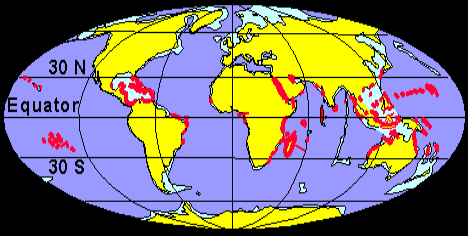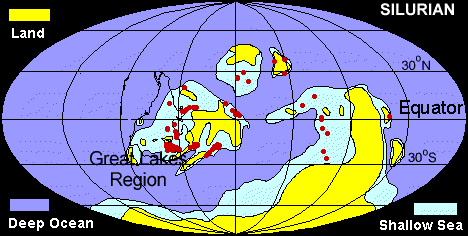 Global locations of modern reefs.
Global locations of modern reefs.
Global distribution of modern and Silurian reefs. The global distribution of Silurian reefs is related to the latitudinal control of climate. The distribution of Silurian reefs in the Milwaukee-Chicago area is related to the local control of sedimentary environment When plate tectonic reconstructions are used to plot the global distribution of Silurian reefs, their latitudinal occurrence shows a striking similarity to that of modern reefs. In comparing the two maps below, note also that shallow seas were much more widespread in Silurian time, while land areas occupy more of the globe today. The modern world, with generalized distribution of reefs shown in red. Nearly all modern reefs occur betwen 30 degrees North latitude and 30 degrees South latitude, which corresponds to zones of tropical and subtropical climate. Reconstruction of the Silurian world, with generalized distribution of reefs shown in red. Note that most Silurian reefs also occurred between 30 degrees North latitude and 30 degrees South latitude.
Photo Gallery

Global locations of modern reefs.
© The Field Museum - CC BY-NC

Global locations of Silurian reefs, highlighting the modern day "Great Lakes" region.
© The Field Museum - CC BY-NC

Global locations of modern reefs.
© The Field Museum - CC BY-NC

